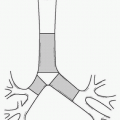Quality Improvement Strategies in Interventional Radiology
Gloria M. Salazar
Hani H. Abujudeh
Introduction
In medicine, delivering improvements in the quality and safety of health care remains a challenge, with an increased focus on reducing unnecessary variation, eliminating preventable errors, and improving safety in care delivery. Quality is defined by the Institute of Medicine (IOM) as care that is safe, patient-centered, equitable, timely, and efficient (1). Poor care delivery results from suboptimal implementation or execution (noncompliance) of safe practices to reduce errors. In interventional radiology (IR), there are several opportunities to address these issues with process improvement projects (2). Most of the safe practices within IR were systematically developed by consensus and evidence-based conclusions (“Society of Interventional Radiology Clinical Practice Guidelines”) to provide clinical indicators that assist in optimal medical decision making (3).
Development of quality improvement (QI) safety strategies in IR has been described with different approaches, and this chapter will describe an overview of safe care delivery domains that are relevant to IR and types of indicators of quality that can be used in IR QI strategies.
Defining Clinical Indicators for QI
Indicators for performance and outcome measurement allow the quality of care and services to be measured. Measurements serve many purposes such as benchmarking; setting priorities; supporting accountability, regulation, and accreditation; and supporting QI and the patient’s choice of providers. Clinical indicators are considered the basis for QI in health care, and it is essential to understand their definitions, characteristics, and categories (4).
Appropriate development and selection of clinical indicators are needed for systematic evaluation of patients’ care. Indicators can be expressed as numbers, rates, or averages, and include measures of structure, process, and outcome for general or specific disease processes. Examples of rate-based indicators include hospital-acquired bacteremia and catheter-related infections. Examples for sentinel indicators that are generally used for risk management purposes include wrong site procedures, postprocedural deaths, and unexpected death after ambulatory procedures (4). The following are characteristics of an ideal clinical indicator: It is based on best available evidence with agreed definitions used for comparative studies, valid and reliable, optimally specific and sensitive, and is relevant to clinical practice (4). In IR, most of the clinical indicators are derived from consensus documents produced and published by the Society of Interventional Radiology (SIR) (3).
Structural indicators describe the amount of resources used by a specific health care system, for example, proportion of specialists to other doctors, access to technologies or specific units, and the use of clinical guidelines that should be periodically revised.
Process indicators assess what the provider did for the patients and how well it was done. It can measure activities and tasks in patient episodes of care. Examples include proportion of patients treated according to clinical guidelines, proportion of patients with myocardial infarction who receives thrombolysis, and proportion of patients assessed by a doctor within 24 hours of referral. In order for a process indicator to be valid, it must be previously demonstrated to produce a better outcome (4).
Outcome indicators measure the effects of care on the health status of patients and populations. Outcomes can be expressed as the five Ds: death, disease, discomfort, disability, and dissatisfaction. Examples of such indicators include mortality, morbidity, functional status, health status measures, work status, quality of life (QOL), and patient satisfaction (4).
More recently, provider-level quality performance measures that address the end-user needs (patients, families, consumers, and payers) have been described. These measures are yet to be tested and can be classified according to IOM domains. Some examples include patient experience scores, hospital 30-day readmission, adverse event rate, rate of same day access, and so forth (5).
In IR, most of the clinical indicators are defined in the SIR Quality Improvement Guidelines documents (3). In addition, there are many therapies developed in IR that affect patient QOL. There are validated tools that define QOL outcomes metrics that can be used in clinical trials and QI projects (6). However, there is still need for validation of process/outcomes metrics in IR that can be utilized as standard of care in IR. Table e-97.1 refers to some of examples of clinical indicators that have been described in IR, and some of which are yet to be validated.
Clinical Indicators in IR
SIR has recommended instituting important procedure-specific aspects of care such as appropriateness, safety, and efficacy through the Quality Improvement Guidelines documents (3). SIR documents address important aspects of procedural care including appropriateness, efficacy and safety, and evaluation with indicator thresholds for specific procedures. When appropriateness of indications or success rates (technical and clinical) are below the minimum threshold, or when complication rates exceed a maximum threshold, a review should be performed to determine causes and to implement changes as necessary (3). The next sections describe indicators that relate to care delivery in IR with respect to procedural complications and safety indicators.
Table e-97.1 Potential Clinical Indicators in Interventional Radiology | ||||||||||||||||||||
|---|---|---|---|---|---|---|---|---|---|---|---|---|---|---|---|---|---|---|---|---|
|






